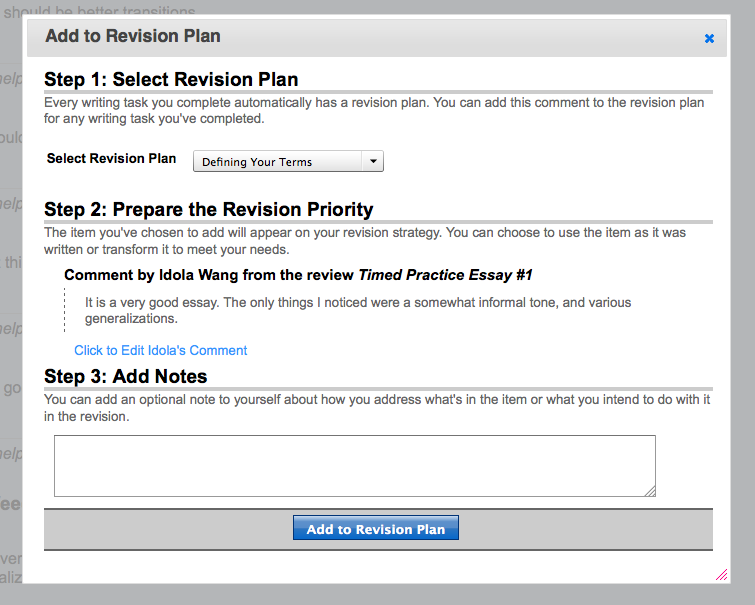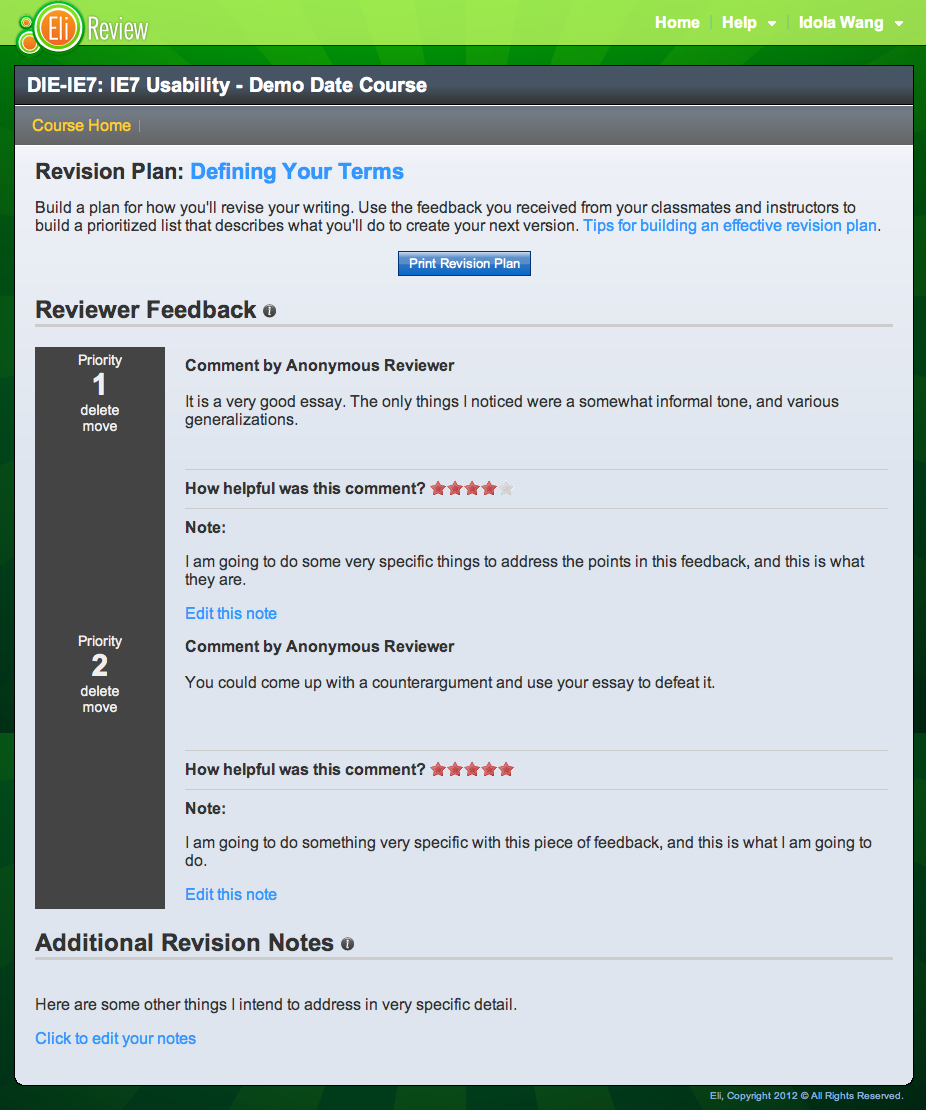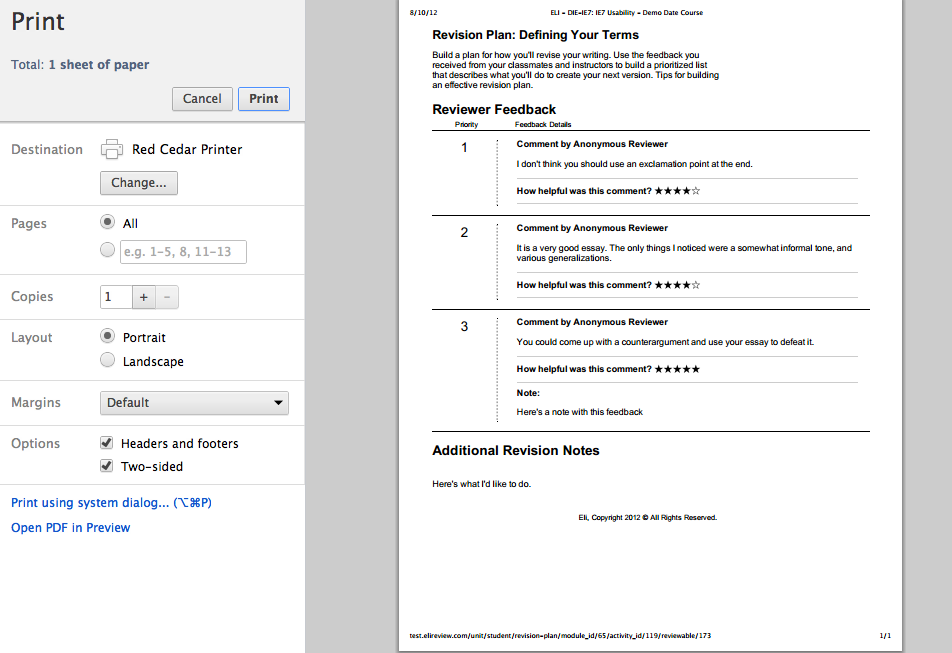There is a set of several revision features coming to Eli in the next few weeks. The first revision feature, the revision plan, is available as of today. Revision plans are essential to effective revision, and so the new revision plan feature makes Eli even more powerful for student learning.
What does the revision plan do?
The revision plan gives writers an easy way to pick and choose from the feedback they receive during a review and develop it into a strategy for revising their writing. Writers can add feedback they’ve received on any review to their plan, or they can build a plan from scratch without using any reviewer feedback.
For instructors, the revision plan offers insight into whether or not students have developed an effective strategy for moving forward with a revision. If a student hasn’t developed their plan substantially, or has failed to utilize key feedback from their reviewers, instructors can see that in the student’s revision plan and can make a decision about whether or not to intervene. Instructors can also compare the revision plan against the revised text to evaluate how the writer did or did not follow through on their revisions.
How does the revision plan work?
In a writer’s review report, accessible after they complete a review, they’ll see a list of feedback they’ve received from their classmates. In addition to being able to rate each piece of feedback for perceived helpfulness, writers can click the “Add to Revision Strategy” link.

They’ll be presented with a window that gives them some choices. They’ll be asked to indicate which revision plan they’d like to add that feedback to, with the writing task that feedback was related to selected by default. They’ll then have the option to edit the feedback, where they can excise any unhelpful portions so that they can concentrate on the most useful components, and they can also choose to add a note about the feedback that might help them address the issue raised in the feedback. Once the writer has completed these options, they’ll have the option of returning to the review report or viewing their revision plan.

When viewing the revision plan, writers can delete individual pieces of feedback (should they decide they’re no longer helpful) or re-prioritizing by dragging and dropping feedback into a new sequence. Writers can continue to add notes to individual pieces of feedback, or they can use the “Additional Notes” option at the end of the plan to write free-form notes that might not have been addressed in their review feedback.

Once a writer is satisfied with a revision plan, they can use the “print report” option that they can keep with them while revising or give to their instructor.

What should instructors keep in mind?
- Short, focused comments are better: Ask reviewers to follow the best practice of creating new comments for each significant point they wish to make. This makes it easier for writers to evaluate and add feedback to a revision plan, rather requiring writers to hack apart a comment for the most useful pieces.
- Turning in a revision plan: Eli allows writers to create a PDF or print their plans in order to share them. Instructors often find it useful to see a revision plan from each student at the conclusion of a review in order to know what each writer understood to be their most valuable feedback.
We’re excited to hear about how you’re thinking about using or actually using revision plans in your class. Please share your ideas with us on Twitter, Facebook, or over email !

